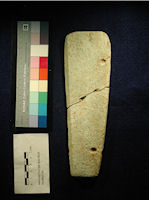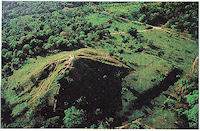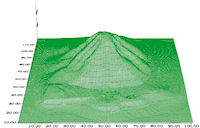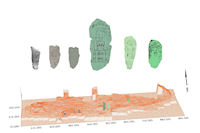
Figure 10: A serpentinite axe recycled as a pectoral
The archaeological samples that were characterised pertained to different Olmec archaeological sites, showing variability with regard to level of administrative hierarchy, different types of archaeological objects, phases in the process of production, and chronology. We obtained the samples from the following Olmec archaeological sites.
La Merced. La Merced is an Olmec archaeological site located in the Lower Basin of the Coatzacoalcos River. It is a secondary site which contained a massive offering of greenstone axes (more than 1,000, iron mirrors and vessels. This site shows three occupations, two of which are Early Formative (1,100 BC). La Merced is close to two regional Olmec sites: San Lorenzo and El Manatí (Rodríguez 2000) (Fig. 10). We took four samples from the Early Formative occupations. They are stone axes, one of which was recycled as a pectoral.
San Lorenzo-Tenochtitlán. San Lorenzo-Tenochtitlán is a regional Olmec site which is famous because colossal sculptured basalt heads were found there. During the 1960s, Michael Coe excavated an offering of greenstone axes underneath a basalt colossal monument (Coe and Diehl 1980). San Lorenzo is a multi-period site, but the most important occupation was during the Early Formative (1200-900 BC). The samples that we obtained were from all the stone axes of this cache, as well as from flakes discovered in those excavations.


Figure 11: A massive offering containing more than a ton of serpentinite
Figure 12: A mosaic of serpentinite, part of a massive offering, now exhibited in Villaherosa, Tabasco
La Venta. La Venta is the most important Olmec site, which flourished during the Middle Formative (900-400 BC). La Venta had colossal basalt sculpture, massive offerings of serpentinite weighing thousand of tons, walls of columnar basalt attached to public earth architecture, and small offerings containing jadeite stone axes and iron mirrors. At La Venta, we sampled remains that correspond to the production process of stone axes, mosaics from the massive offerings (Figs 11 and 12), and all the greenstone stelae (Figs 13, 14, and 15), which were located at the southern side of the tallest pyramid (Complex C) (Gónzalez Lauck 1997) (Figs 16, 17, and 18).


Figure 16: View of Building C of La Venta. An earthen mound, 30m in height
Figure 17: Topography of Building C of La Venta

Figure 18: Southern side of Building C from La Venta. All the green monuments were made from serpentinite
© Internet Archaeology/Author(s) URL: http://intarch.ac.uk/journal/issue26/21/3.html
Last updated: Wed Jul 29 2009